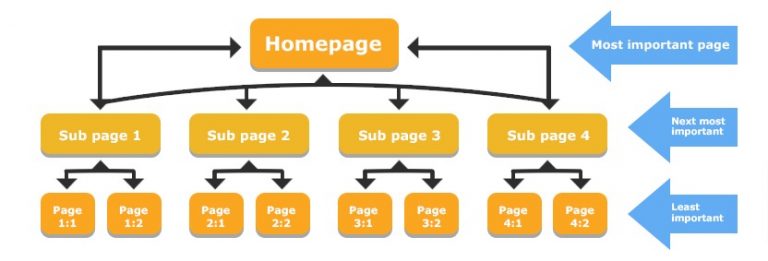SEO has evolved in a lot of ways — but one thing that hasn’t changed is the fundamental value of showing up on page one of Google Search results.
For sure, the days of ten simple blue links and a few ads are over. Even with all the new SERP features, rich results, and personalization of results, though, it remains true that ranking on the first page for keywords that matter to you is the table stakes of organic traffic acquisition.
According to a 2020 study, the click-through rate for a position 10 result (typically the bottom of page one) is 3.11%. It’s low, but still higher than typical ad click rates.
While the study didn’t measure below the tenth result, it’s not unreasonable to think that after the first page clicks drop quickly to near-zero. When was the last time you went beyond the first page for a single query?
Depending on the query, the competition for a spot on page one of Google can be fierce. But with the right work and SEO effort, it is achievable.
Let’s look at some of the best, proven methods for helping your pages get there.
1. Improve Internal Linking
I put internal linking first because it is one of the easiest tactics to implement that can have significant positive effects on your ranking.
The internal linking structure of your site is one of the primary ways Google assesses what your site is about.
And the better Google understands that the more things they might rank you for.
In addition, strategically applied linking between your pages can result in you building better topical authority for your key topics, increasing the chance that Google will want to rank you higher for those topics.
Strategic internal linking means linking pages together where it makes the most sense for your visitors.
In other words, it is not just linking any page to any other page.
Instead, look for opportunities where specific pages add to or enhance the information on the page a user lands on.
Not only will your users benefit from access to more relevant information but search engines appreciate it, too (and for the same reason: more benefit to their users).
This kind of strategic interlinking also shows Google that you have thorough coverage of the topic, giving them more confidence that users they send to your site will come away satisfied and happy.
Here are more internal linking tips from Search Engine Journal (see what I did there?)
2. Find Your Threshold Pages
Threshold pages are those that currently rank just below page one (traditionally, positions 11 through 20).
They likely produce little to no traffic for you but with a little tweaking, they could move up to the “money” positions of the first page.
They should be high on your priority list because getting these pages to page one is usually easier than ranking new content.
Start by using your rank tracking tool of choice to segment for your pages with keywords ranking in positions 11 through 20.
Then sort by search volume to bring the highest potential return pages to the top.
Now apply the other tips in this article to those pages and get them to page one!
3. Research Competitive Content
If you have important pages that aren’t making it to page one, there’s a simple truth you must accept: the others have something you don’t.
While we don’t know all the reasoning Google uses to decide why those pages rank above yours, many things might be apparent upon cross-examination.
That means you should spend time looking at the landing pages for all the results ranking above yours and carefully compare them to your page. Here are some questions to ask about each competitive page:
- Is the content noticeably better quality (more complete, exudes authority without talking over the intended audience, includes more relevant information and sources)?
- Is it better written?
- Does it contain keywords/topics that your page doesn’t?
- Does it have better internal linking to other pages on their site? Do other relevant pages link to it?
- Is the external link profile (backlinks) bigger and/or of higher quality?
- Does it contain “extras” that might be helpful to visitors (images, charts, videos, tables, etc.)
While you don’t want to copy the pages outranking you, what they are doing that you aren’t can provide good clues on how to improve your page to get in their league.
4. Move Important Pages Higher in Site Navigation
This technique can’t be used for every page on your site, but it can do a lot for your most important pages.
One way Google assesses the relative importance of a page is its distance from the home page via your internal navigation.
Your homepage typically gets the most external links and therefore the highest page authority on your site.
That link equity is flowed to other pages linked from the home page, with those linked directly getting the lion’s share.

Moving your most critical pages closer to the home page will increase their authority and therefore their ability to rank higher.
5. Make Your Site Mobile-Friendly
This tip should be obvious, but if you haven’t yet made your site mobile-friendly, now is the time to do it.
We’re long past the tipping point where the majority of searches begin on mobile devices.
Mobile-friendliness is part of the Page Experience update, and it stands to reason that Google will give preference to mobile-ready content for people searching on mobile devices.
Anything you can do to make your site more user-friendly will increasingly match up with goals Google has set itself for its search ranking algorithms.
6. Earn/Build More Links
Google has given us a lot more to consider these days in terms of rankability (content quality and relevance, semantic and entity relationships, and more) but good old-fashioned backlinks remain highly correlated with the ranking ability of pages.
Earning links means creating content that is so good and authoritative that other sites will want to link to it as a reference while building links involves actively seeking opportunities for relevant links from trustworthy sites.
To learn more about how to earn and build more links to your pages, see this excellent link building checklist here on Search Engine Journal.
7. Pursue Featured Snippets
Moving up to the ranking position ladder is hard (but necessary) work. Sometimes though you can leap to the head of the class.
Featured Snippets are a feature of Google Search where one of the top results is promoted to a rich snippet box at the top of the search results page.
While the rich snippet excerpt may go a long way toward satisfying the searcher’s query, the experience of many SEOs show that Featured Snippets frequently drive a lot of traffic, as users want to know more than is shown in the snippet.
There is no guaranteed way to get shown in a Featured Snippet, but here are few things you can do to increase your chances:
- Look at variations of your keyword in Google search to see if a Featured Snippet is shown for any of them in order to identify opportunities. Some SEO tools will identify these opportunities for you automatically. Featured Snippets are most frequently shown for keywords with informational intent or where the query is a question.
- Where a Featured Snippet is shown, observe the structure of the featured content. Is it a table, paragraph text, bullet list, video, or other types? While it may not be necessary to copy the format, it might give you a clue as to the type of content Google prefers for this query.
- Look at your top-ranked page for the query. See how you can improve it to make it more attractive to Google to put in a Featured Snippet.
Above all, keep in mind that for Featured Snippets, Google wants content that clearly, concisely, and accurately answers the intent of the query.
8. Refresh Past Performers
Most successful content has a lifecycle that looks something like this:

Sometime after the content is published, it begins to grow in ranking and therefore traffic.
But almost inevitably, over time, the traffic it drives will start to decay.
Why does this happen? Some possible reasons include:
- Newer, better, and/or higher authority content has been published by others.
- The intent of the query has changed over time.
Whatever reason has caused your content to slip in its earning potential, there are ways to revive it and give it new life in the SERPs.
Splice Keyword-Rich Content
Splicing is one method to apply when your content is still performing well. It can help the piece continue to thrive rather than sinking into decline.
The splice technique involves identifying pages on your site that are ranking for a higher-than-average number of keywords.
That might sound like a good thing, but it actually represents missed opportunities, because inevitably some of those keywords are not ranking as highly as they could.
To splice, you identify the lesser-performing keywords for the current page that still have potential. These may be queries where the page ranks on page two of results, or where it ranks low but there is high demand.
Once you’ve identified those opportunities, create new content pages focused on the specific intent of those keywords, then interlink those pages with your original, currently ranking page.
This gives Google better landing page targets for a topic group where you are already proven to be authoritative and trustworthy.
Expand and Enrich
If your content is already in the decay stage of its lifecycle, you may need to consider killing it (especially if it is too outdated or irrelevant to recover).
However, you might be able to revive it by improving the page to make it more competitive in the current SERP environment.
To do this, search the main keywords for which you want the page to rank and spend time examining the content of all the pages ranking above yours.
Ask yourself what they include that your page doesn’t. Are there keywords, topics, features (images, videos, etc.), links, or other elements that you could add to your page?
The idea here isn’t to copy exactly what these competitor pages are doing, but rather to gain an idea of what Google might see on them that makes them more valuable than your current page.
More Resources:
- 101 Quick & Actionable Tips to Improve Your SEO
- 10 Advanced SEO Tips & Techniques You Need to Know
- Core Web Vitals: A Complete Guide
Image Credits
All images by seoClarity, used with permission





![AI Overviews: We Reverse-Engineered Them So You Don't Have To [+ What You Need To Do Next]](https://www.searchenginejournal.com/wp-content/uploads/2025/04/sidebar1x-455.png)